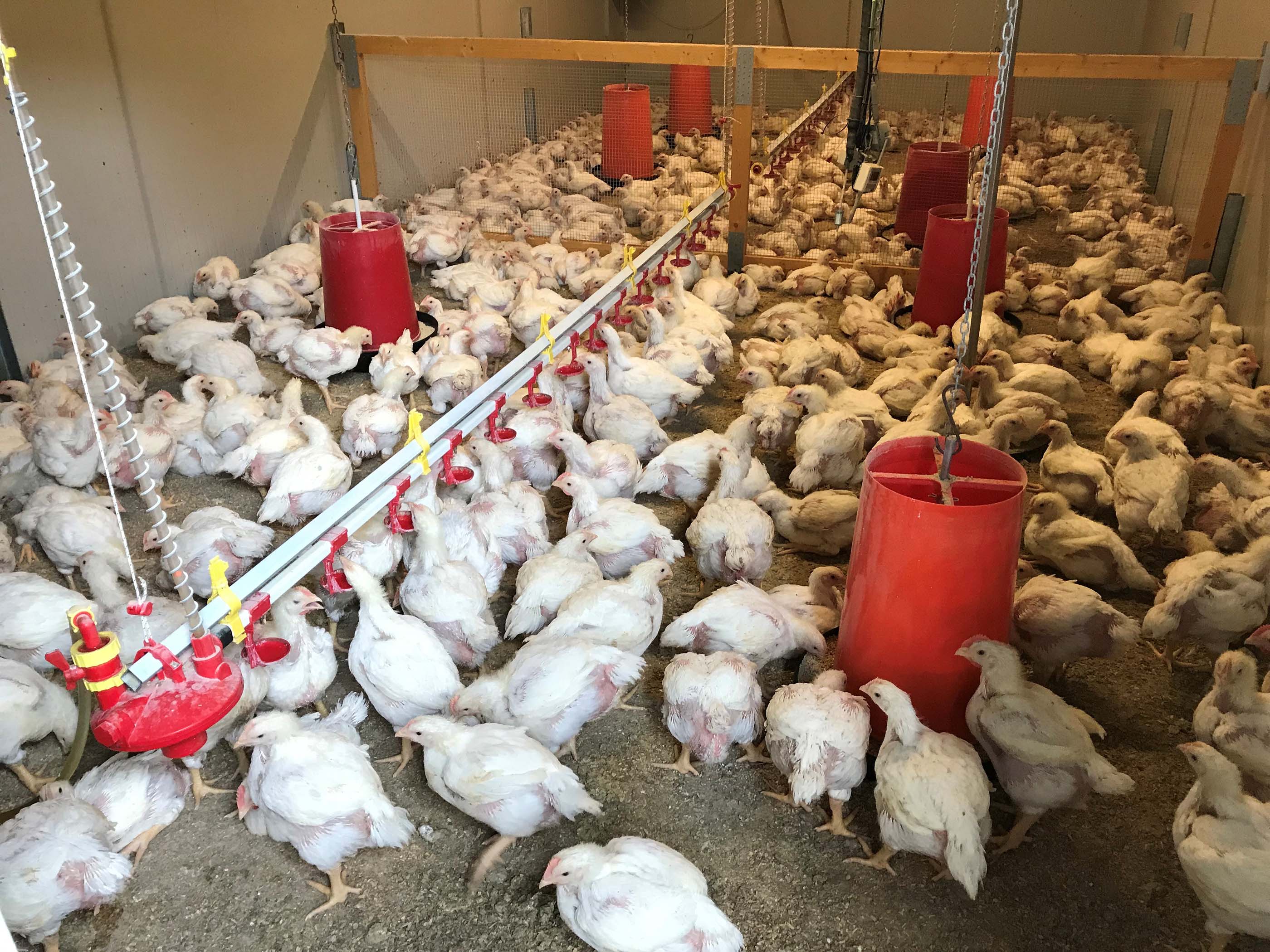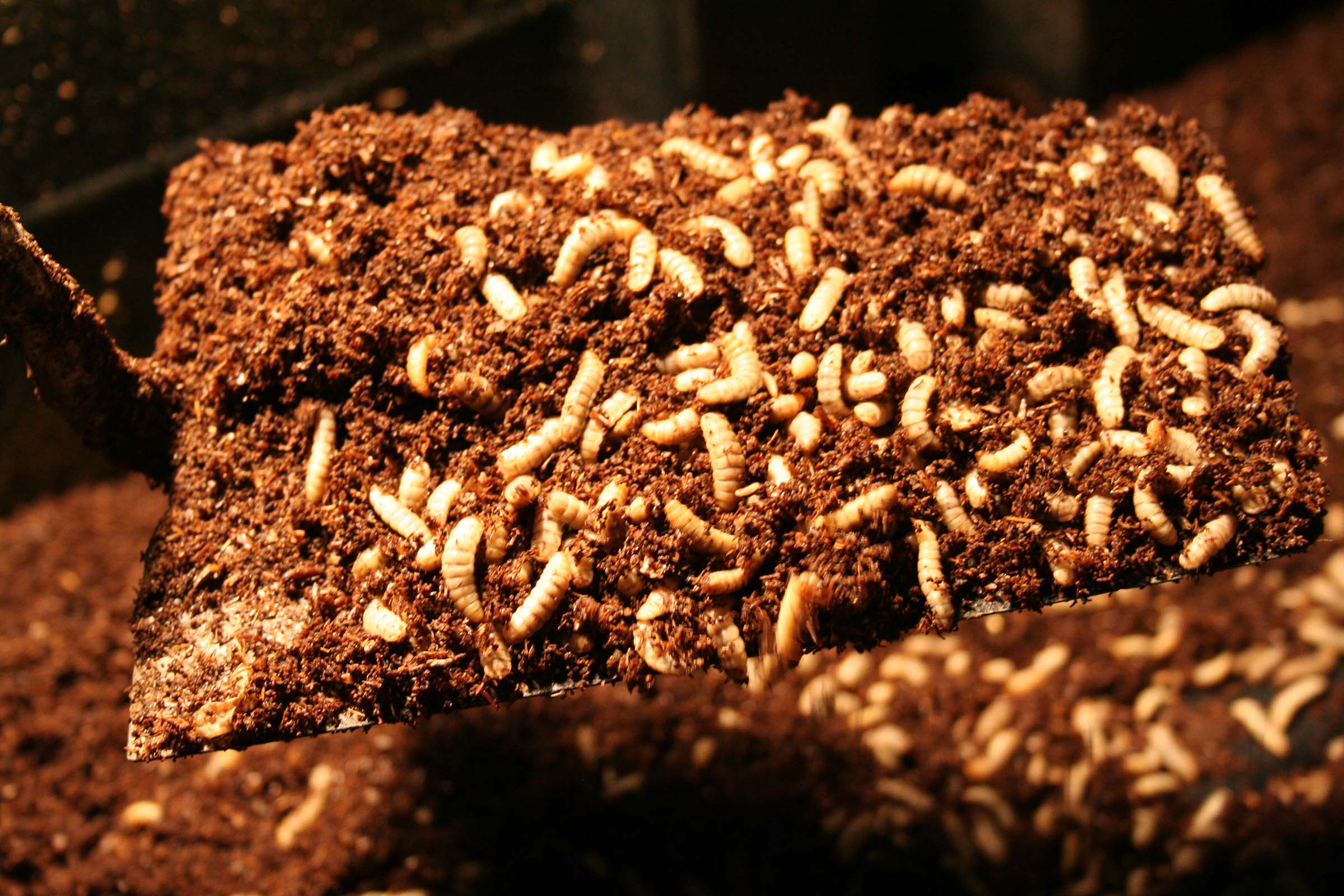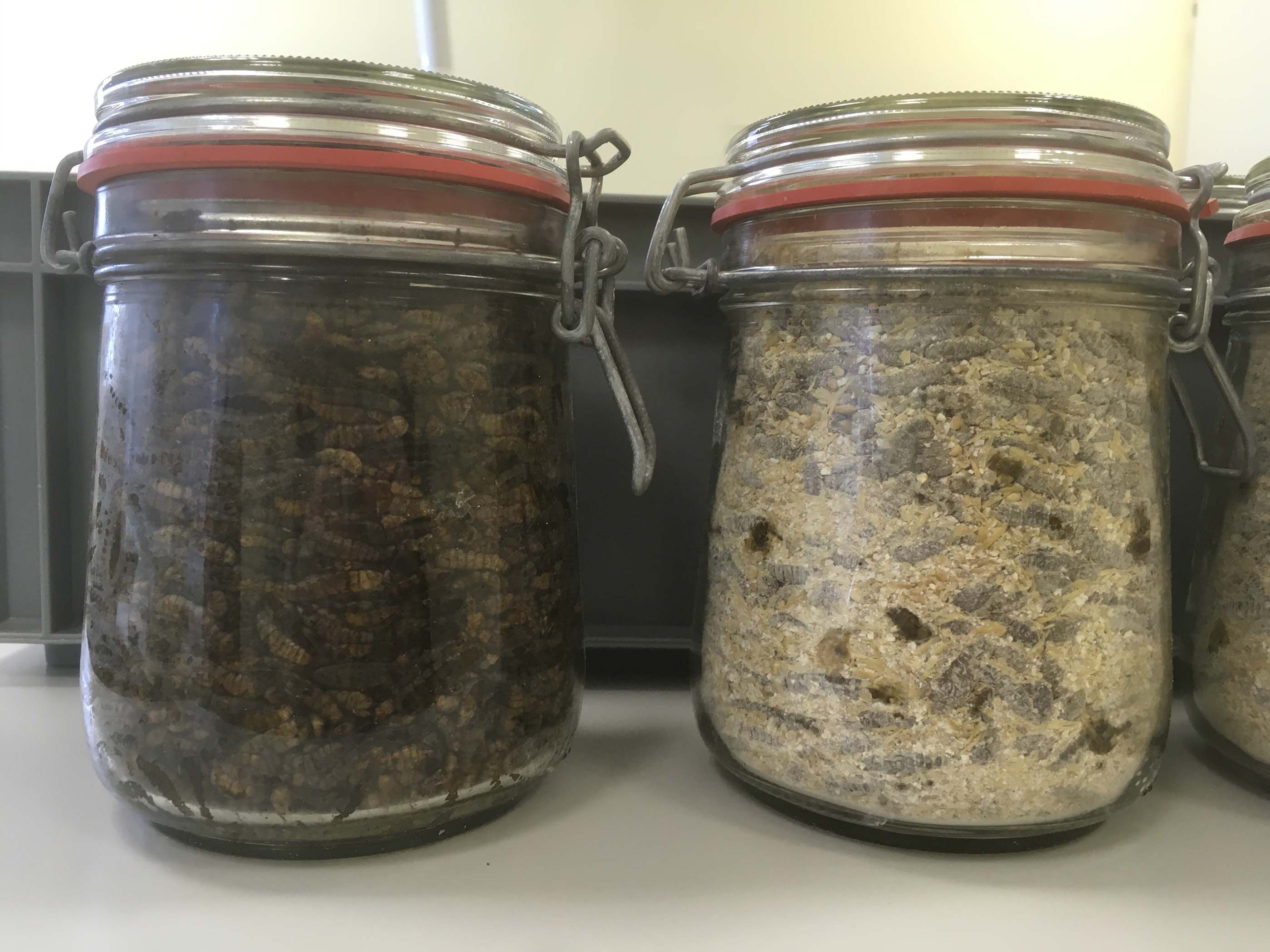Work package 34.2.2 Larval preservation
were carried out at the HBLFA Raumberg-Gumpenstein from 2018 to 2019 to preserve larvae of the black soldier fly ( Hermetia illuscens The killed, non-defatted larvae contained 27% DM, 50% crude protein and 27% crude fat id DM. The larvae were classified as very difficult to ensile due to the high protein and fat content, but also because of the hardly any sugar (1%). The ensiling of the soldier fly larvae without additional, easily fermentable substrate or ensiling aids was characterized by insufficient pH reduction, false fermentation with butyric acid formation, severe protein degradation - formation of ammonia and biogenic amines - and losses of fermentation juice as well as a strong smell of spoilage. The addition of lactic acid bacteria, molasses, tannins and various combinations of these ensiling agents mentioned could not or only slightly improve the fermentation quality. Chemical preservatives such as formic acid and especially sodium nitrite worked better. The greatest fermentation success was achieved by adding an absorbent, easily fermentable substrate in the form of barley meal. From 20% barley meal addition, a sufficient pH reduction was achieved through lactic acid fermentation and complete fermentation juice binding. The combination of 20% barley meal + sodium nitrite or lactic acid bacteria (Silasil Extra) ensured fermentation success while simultaneously eliminating the smell of spoilage. The ensiling of larvae with the addition of 40% barley meal resulted in very good fermentation success and impeccable feed hygiene, even without additional silage additives. However, the content of some biogenic amines (putrescine, cadaverine and tyramine) increased significantly as a result of ensiling, even with barley meal content of 40%. Ensiling reduced the proportion of amino acids by 21% compared to fresh larvae, and lysine was also significantly affected. The gentle drying of larvae at 50-55 °C resulted in less loss of value compared to ensiling, although the total amino acid content was also reduced by 10% during drying compared to fresh larvae. Given the lower amino acid contents of preserved larvae, it would be desirable to degrease the larvae before preservation, which could significantly increase the contents. The ensiled larvae were stable after opening and showed no aerobic spoilage after 9 days in air at room temperature.
Variants of larval silages, source: Resch R.
Work package 34.2.3 Broiler fattening and emission measurement
The substitution of certain proportions of soy protein with larval meal was examined in broiler fattening at the HBLFA Raumberg-Gumpenstein in three fattening cycles from 2019 to 2020 on 420 broilers each. The test feed was compared with a control feed and the success was measured based on biological fattening parameters (daily gain, final weight) and emissions (ammonia). The first approach to replace 75% soy protein failed due to negative effects of larval meal on animal health, lower fattening performance and increased NH 3 emissions. The high proportion of 75% insect protein in the feed rations was not physiologically acceptable for broiler chickens of the Ross breed. The reduced proportion of larvae meal in the test feed of 35 - 40% for the following two experiments (in exchange for soy) led to a significant improvement in animal health. The number of losses in the test groups fell to the level of the control groups, the animals' excretions had a reduced watery consistency and the animals' feathers corresponded to those with conventional feeding. However, compared to the control group, the mean daily weight gain was reduced by 6 g and the mean slaughter weight was reduced by 226 g per animal. The higher emissions (average NH 3 concentration in the exhaust air, average NH 3 emissions per animal location and year, average odorant concentration) when feeding larvae with meal indicate inadequate protein digestion. Presumably, a further reduction of the larval protein in the direction of 10 to 20% could also lead to an equalization of the experimental and control groups.

Broiler test control group, source: Kropsch, M.
Final report







